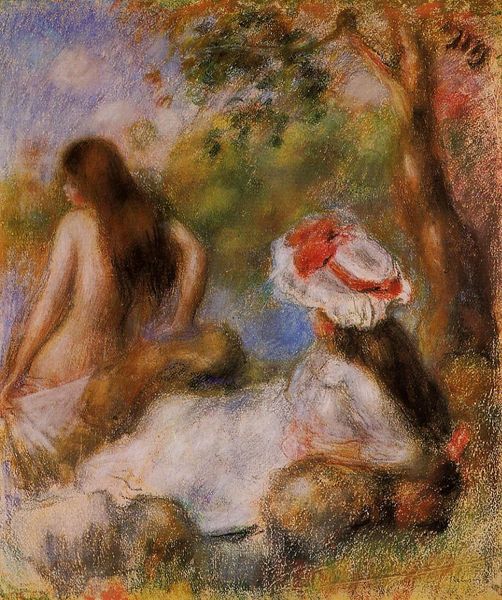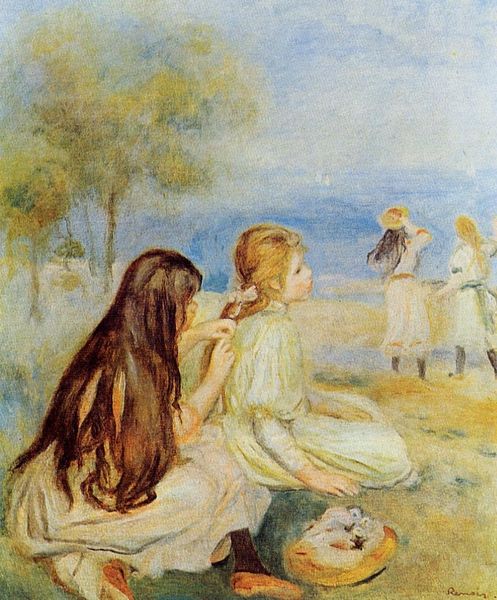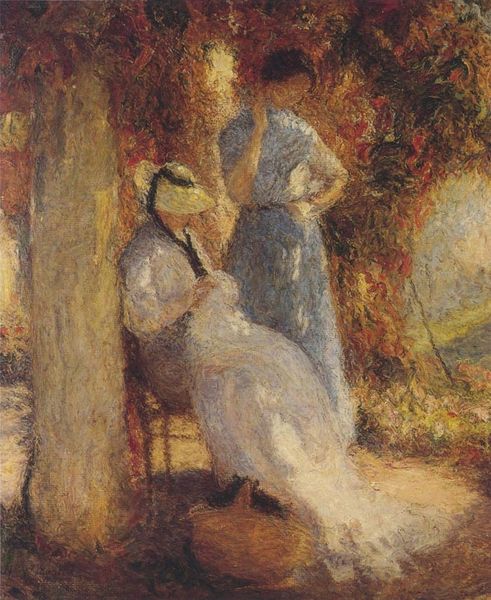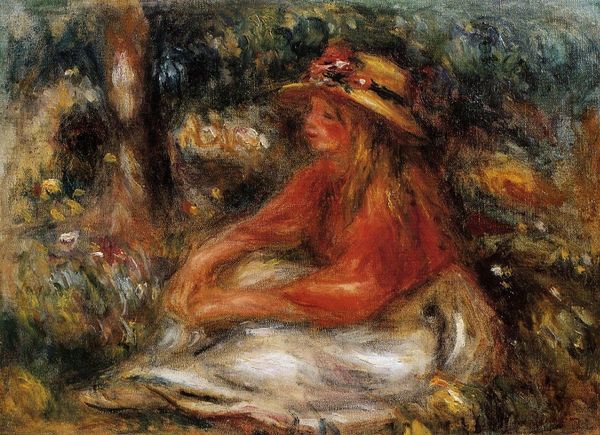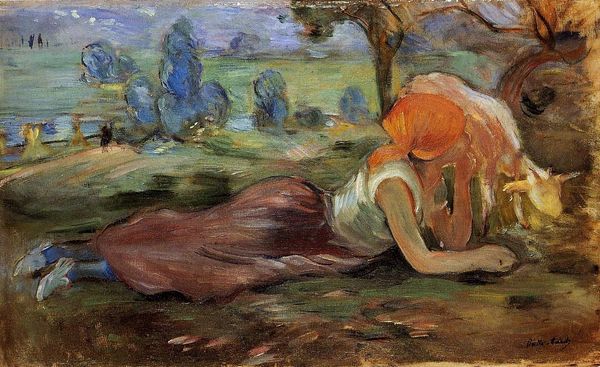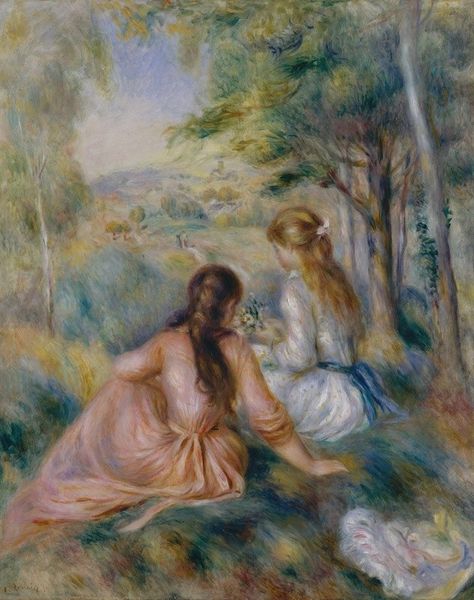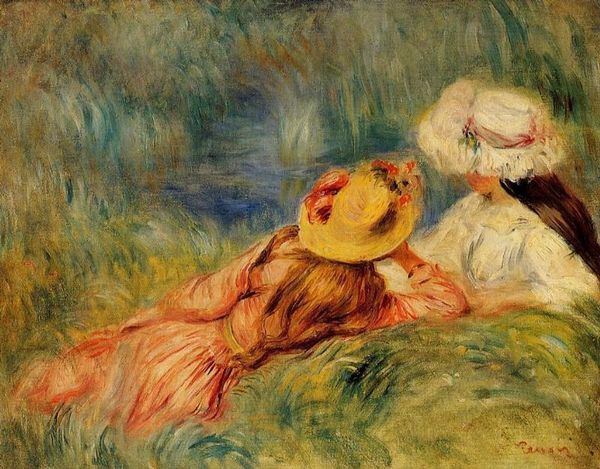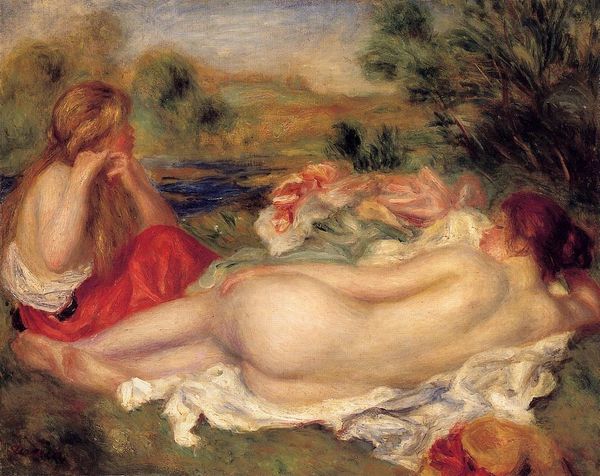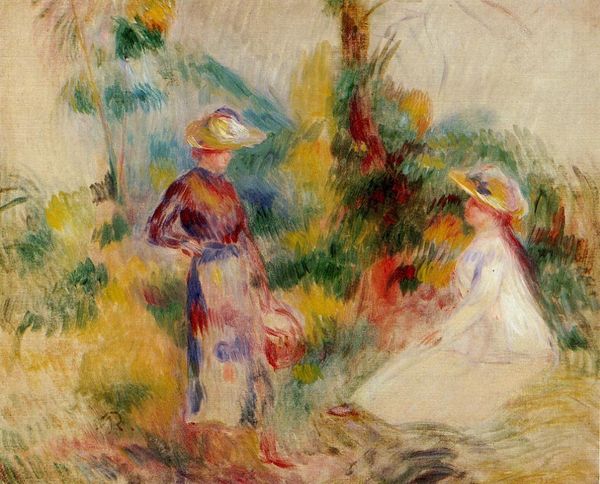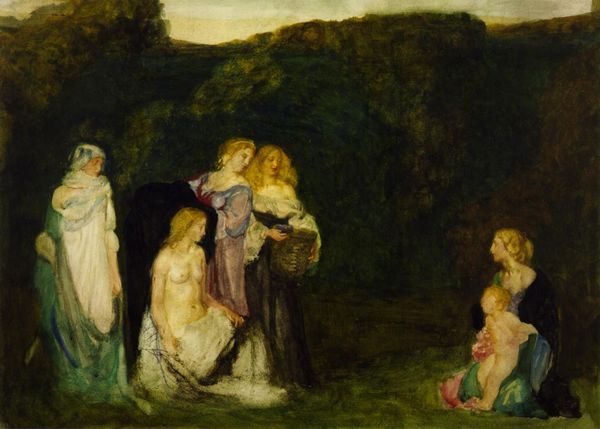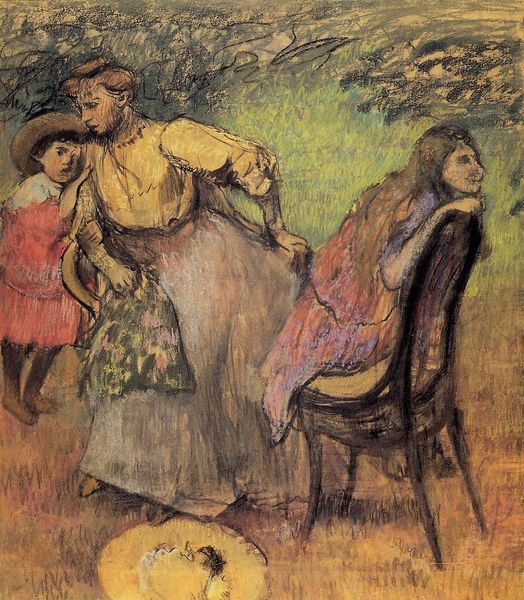
Copyright: Public domain
Curator: Standing before us is Pierre-Auguste Renoir's "Young Girls by the Sea," painted in 1894. What strikes you about it at first glance? Editor: Honestly? It looks unfinished. The figures are indistinct, almost swallowed by the landscape. But the light… the dappled, hazy light—it's mesmerizing. It’s very soft on the eye, which makes me think of leisurely afternoons. Curator: I agree about the light; he’s truly captured a sense of radiant languor. But "unfinished?" That was Renoir's late style! He abandoned crisp lines for blended colors, focusing on capturing fleeting moments. He really leaned into that idea of "Impressionism." This involved working *en plein air,* where capturing the fleeting moment was the point of it all. I always found something charming in his art style. Editor: Fair enough. I suppose what I’m responding to is the implied labor, or rather, the lack thereof. These aren’t working women; their clothing, their leisure – even the impasto application of the oil paint – speaks to a certain economic privilege, a specific social class. Curator: Absolutely. He was painting a world he knew, a world of relative ease. Though I sometimes wonder, was it truly "easy" for those women? Social expectations, the constant gaze... Even idyllic scenes can hold hidden complexities, can’t they? But what about the materials he used to render that complexity—did he also use them to cover over those expectations that would come to light years after he was gone? Editor: Interesting. The oil paint itself—ground pigments, linseed oil binder, perhaps some lead to enhance the white—all that comes from somewhere, is processed by someone. The canvases were primed, stretched... And who profited from all that? Not the girls by the sea, that’s for sure. Curator: Ah, always bringing it back to the raw stuff of art! Still, his intention wasn't social critique. I see it as a celebration, albeit perhaps an uncritical one, of beauty and the ephemeral. The way the brushstrokes melt together… the figures are almost secondary to the overall sensation of light and atmosphere. To evoke a moment... don't you think there is something amazing there? Editor: Maybe. But even celebrations are built on something, on somebody’s labor and somebody’s resources. And Renoir, whether he intended to or not, participates in that system through the very act of creation. To that degree, at least, Renoir brings a whole lot of attention to himself, which can’t be completely separated from the politics he actively didn’t choose to focus on. Curator: Well, that’s certainly given me a different lens through which to view this, now I'm asking myself new questions! Editor: Glad to be of service.
Comments
No comments
Be the first to comment and join the conversation on the ultimate creative platform.

